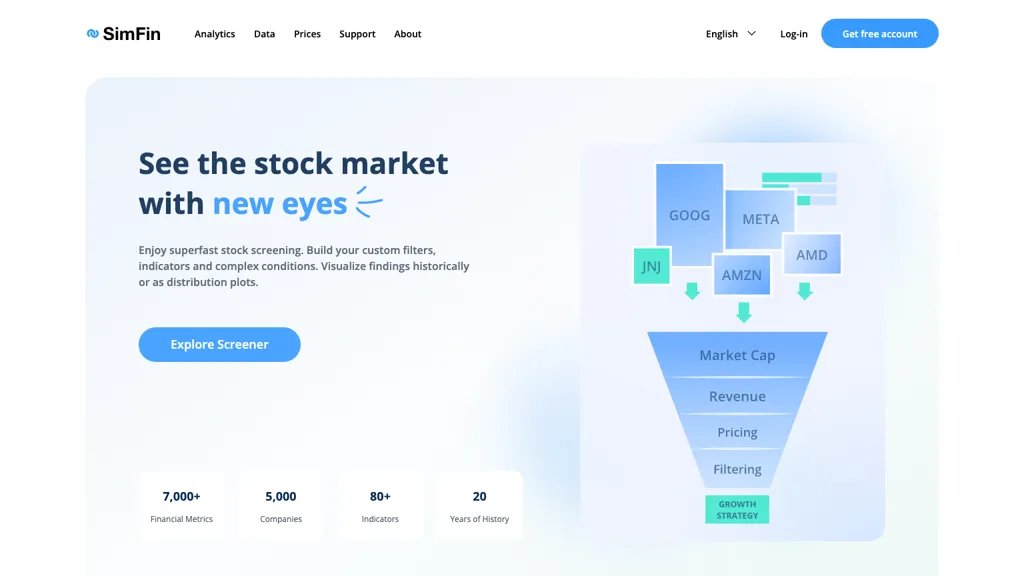To enable AI-driven trading and stock prediction platforms to give accurate and reliable information it is crucial to evaluate the quality of their data sources. Insufficient quality data can lead to inaccurate predictions and financial losses. This can lead to mistrust for the platform. Here are ten of the most effective tips to help you evaluate the quality of data sources and their reliability.
1. Verify data sources
Verify the source of the data: Ensure the platform uses reputable and well-known data providers (e.g., Bloomberg, Reuters, Morningstar, or exchanges like NYSE, NASDAQ).
Transparency - The platform should be open about the sources of its data and should regularly update them.
Avoid relying on a single source. Trustworthy platforms often combine data from several sources to lessen the chance of bias.
2. Examine the quality of data
Real-time or delayed data Find out if the platform offers actual-time or delayed data. Real-time data is crucial for trading that is active. However, delayed data could be enough for long-term analytics.
Update frequency: Check if the data has been updated.
Accuracy of historical data Verify that the data is uniform and free of irregularities or gaps.
3. Evaluate Data Completeness
Check for missing data: Check for gaps in the historical data, missing tickers, or insufficient financial statements.
Coverage: Ensure the platform offers a broad range of stocks, markets as well as indices and equity markets that are pertinent to your trading strategies.
Corporate actions: Make sure that your platform allows stock splits and dividends along with mergers and other corporate events.
4. Accuracy of test data
Cross-verify the data: Compare data from the platform with data from other sources you trust to guarantee that the data is consistent.
Find mistakes: Look for anomalies, incorrect prices or financial metrics that are not in sync.
Backtesting: You can use historical data to test trading strategies. Verify that they are in line with your expectations.
5. Review the data's Granularity
Level of detail: Ensure the platform has granular information including intraday price volumes, bid-ask spreads, and the depth of an order book.
Financial metrics: Find out whether your platform has comprehensive financial reports (income statement and balance sheet) and crucial ratios, such as P/E/P/B/ROE. ).
6. Make sure that Data Cleansing is checked and Preprocessing
Normalization of data: Make sure the platform normalizes data (e.g. making adjustments for splits, dividends) to maintain consistency.
Outlier handling - Check out the way your platform handles anomalies or data that is not outliers.
Data imputation is missing Verify that your platform uses reliable methods when filling in the missing data.
7. Examine the Consistency of Data
Timezone alignment Data alignment: align according to the same timezone in order to prevent any discrepancies.
Format consistency: Determine if the data is formatted in a consistent format (e.g., units, currency).
Cross-market consistency: Verify that the data from various exchanges or markets is consistent.
8. Assess Data Relevance
Relevance to your strategy for trading The data you're using is in accordance with the style you prefer to use in trading (e.g. technical analysis quantitative modeling and fundamental analysis).
Feature selection: Verify that the platform offers useful features to improve your forecasts (e.g. sentiment analysis macroeconomic indicator news data).
Examine Data Security Integrity
Data encryption: Check that the platform is using encryption to secure data as it is transmitted and stored.
Tamper proofing: Verify the data on the platform isn't being altered.
Conformity: Determine whether the platform is compliant with laws on data protection (e.g., GDPR, the CCPA).
10. Test the AI model of the platform Transparency
Explainability: Make sure the platform offers insight on the way in which the AI model makes use of the data to generate predictions.
Bias detection: Determine that the platform monitors, and mitigates, biases that exist within the data or models.
Performance metrics. Evaluate performance metrics such as precision, accuracy, and recall to assess the validity of the system.
Bonus Tips:
Reviews and reputation of users - Research the user feedback and reviews in order to determine the reliability of the platform and data quality.
Trial period. You can use the trial period to test the features and data quality of your platform before you decide to purchase.
Support for customers: Make sure that the platform has a solid customer service that can assist with questions about data.
Following these tips can help you better assess the sources of data as well as the quality of AI stock predictions platforms. You'll be able make reliable and informed decisions about trading. Follow the top rated inciteai.com AI stock app for site tips including chatgpt copyright, ai stock trading bot free, best ai trading software, ai stock picker, best ai trading app, ai chart analysis, ai stocks, ai stock trading bot free, ai for investing, chatgpt copyright and more.

Top 10 Tips To Assess The Transparency Of Ai Stock Trading Platforms
Transparency is an important aspect to look at when looking at AI trading and stock prediction platforms. It allows users to be confident in the operation of the platform, understand the way in which decisions are made and confirm the accuracy of the predictions. These are the top ten tips for assessing the transparency of such platforms:
1. AI Models explained in depth
TIP: Ensure that the platform gives detailed information on the AI models and algorithms that are used to make predictions.
Understanding the technology's foundation lets users evaluate its credibility.
2. Disclosure of data sources
Tips: Check if the platform is transparent about the data sources it uses (e.g., historical stock information, news, social media, etc.).
The platform will use reliable and comprehensive data If you are familiar with the sources.
3. Performance Metrics And Backtesting Results
TIP: Ensure there is transparency in the performance metrics reported (e.g. accuracy rates, ROI), and backtesting outcomes.
This will give users the ability to compare past performance against the latest platform.
4. Real-time notifications, updates, and updates
Tips: Make sure you can get real-time notifications and updates on trading, predictions or other changes to the system.
What is the reason? Real-time visibility assures that users are always conscious of crucial actions.
5. Limitations and open communication
TIP: Check if your platform explains the limitations and risks of the strategies used to trade and the forecasts it makes.
Why: Acknowledging limits builds confidence and allows you to make better choices.
6. Raw Data is available to users
Tips: Determine if users can access raw data or intermediate results used by AI models.
The reason: Users can conduct an analysis on their own using raw data, and then validate their predictions.
7. Transparency and transparency in costs and fees
TIP: Ensure that the fees, subscription charges, and hidden costs are clearly disclosed on the platform.
Why: Transparent pricing prevents cost-insane surprises and helps build trust.
8. Regularly scheduled report and audits
Tips: Make sure the platform is regularly updated with reports or undergoes third-party audits to confirm the operation and efficiency of the platform.
Why Independent Verification is important: It increases credibility, and also ensures accountability.
9. Explainability of Predictions
Tip: Determine whether the platform is able to explain how it generates specific predictions or suggestions (e.g. decision trees, the importance of features).
Why? Explainability allows users to learn the reasoning of AI-driven decisions.
10. User Feedback Channels and Support
TIP: Determine whether the platform provides an open channel for user feedback and support, as well as whether it is able to respond in a transparent manner to user concerns.
Why: Responsive communications demonstrate an interest in transparency and user satisfaction.
Bonus Tip: Regulatory Compliance
Ensure the platform complies with relevant financial regulations and declares the status of its compliance. This adds an additional layer of transparency.
Make informed choices by weighing all of these factors. See the top rated stock trading ai for more examples including best ai stocks, ai stock trader, ai stock investing, ai investment tools, best ai penny stocks, how to use ai for copyright trading, best ai stocks to buy now, ai copyright signals, ai stock analysis, best ai trading platform and more.
